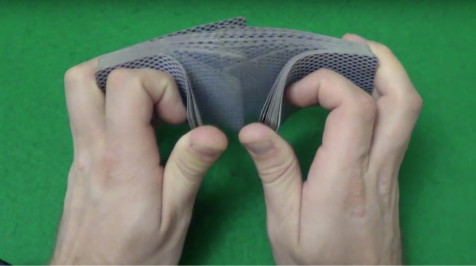| << Chapter < Page | Chapter >> Page > |
We have seen how entropy is related to heat exchange at a particular temperature. In this section, we consider entropy from a statistical viewpoint. Although the details of the argument are beyond the scope of this textbook, it turns out that entropy can be related to how disordered or randomized a system is—the more it is disordered, the higher is its entropy. For example, a new deck of cards is very ordered, as the cards are arranged numerically by suit. In shuffling this new deck, we randomize the arrangement of the cards and therefore increase its entropy ( [link] ). Thus, by picking one card off the top of the deck, there would be no indication of what the next selected card will be.

The second law of thermodynamics requires that the entropy of the universe increase in any irreversible process. Thus, in terms of order, the second law may be stated as follows:
In any irreversible process, the universe becomes more disordered . For example, the irreversible free expansion of an ideal gas, shown in [link] , results in a larger volume for the gas molecules to occupy. A larger volume means more possible arrangements for the same number of atoms, so disorder is also increased. As a result, the entropy of the gas has gone up. The gas in this case is a closed system, and the process is irreversible. Changes in phase also illustrate the connection between entropy and disorder .
This leads to a change (decrease) in entropy of the reservoir:
The increase in entropy of the universe is therefore

Notification Switch
Would you like to follow the 'University physics volume 2' conversation and receive update notifications?